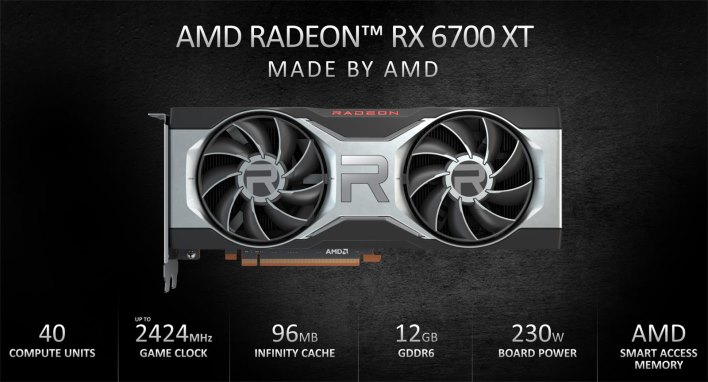When it comes to Ethereum mining, NVIDIA has been getting a bulk of the attention in recent weeks for all the wrong reasons. Its newly released GeForce RTX 3060 has a cryptocurrency mining limiter enabled (crippling performance by up to 50 percent) in hardware/BIOS/drivers, and it’s rumored that future GeForce RTX cards will have a similar limitation. But NVIDIA GPUs aren’t the only ones capable of mining for cryptocurrency: AMD’s previous-generation RDNA cards were well suited for Ethereum mining, while its current-generation RDNA2 cards are not nearly as efficient.
The alleged Ethereum mining hash rate for the upcoming Radeon RX 6700 XT has been revealed. Although these screenshots could have been faked, the Radeon RX 6700 XT is reportedly dialed in 43 MH/s. That is slightly higher than the GeForce RTX 3060, which is rated at around 41.5 MH/s before its hash rate limiter kicks in.

But whereas the GeForce RTX 3060 drops down to 26 MH/s or below once its limiter kicks in, the Radeon RX 6700 XT won’t have such limits put in place. For comparison, the Radeon RX 6800 XT has an Ethereum hash rate of 59 MH/s, which puts it only marginally ahead of the Radeon RX 5700 XT (54 MH/s). As we’ve previously reported, AMD’s RDNA2 GPUs aren’t exactly efficient at Ethereum mining, but we at least have a general idea of how the Radeon RX 6700 XT stacks up.
However, mining performance is only a secondary function of the Radeon RX 6700 XT. AMD designed the card to deliver rockin’ 1440p gaming performance, which can be further boosted with Smart Access Memory on Ryzen 3000 and Ryzen 5000 processors. The Radeon RX 6700 XT includes 50 compute units, a game clock of 2,424 MHz, and 12GB of GDDR6 memory onboard. AMD says that this GeForce RTX 3060 Ti/GeForce RTX 3070-rivaling performance will come with a $479 price tag.
The Radeon RX 6700 XT officially goes on sale on March 18th and is likely to be a highly sought-after graphics card for gamers (we’d assume, not so much for miners). However, given how demand has vastly outstripped supply for both current- and previous-generation graphics cards, it’s likely that it’ll be hard to find cards in stock at MSRP for months to come.
